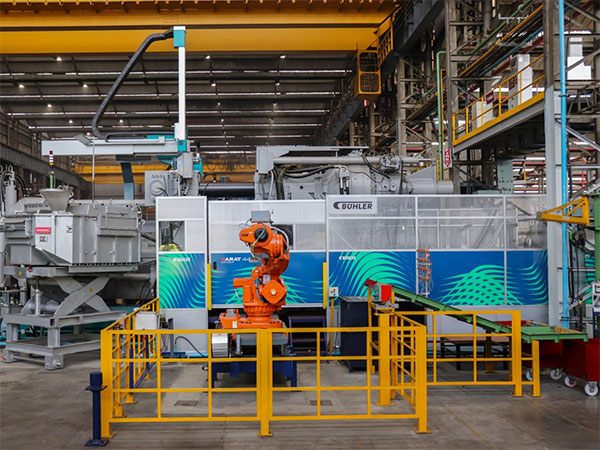
Smartphones are making Indian kids Myopic, numbers double in a decade
May 28, 2024
Mediawire
New Delhi [India], May 28: India is the most populous country in the world with a greater number of young people. In this era of digitalization, the screen time of an individual has increased to a great extent. And kids are not exception. The use of smart phones, computers, laptops or TV screens have become a part of their daily routine. In past few years the kids are more home bound, involved in near work and their hours of outside playing has reduced significantly.
Dr Rajesh Prabhu quoted "Myopia (short sightedness) that was once thought to be a minor eye problem, has now become a growing global health problem. Prolonged use of digital devices, reduced outdoor activities are important risk factors for the surge of myopia patients around the world apart from family history of myopia. Undetected myopia can impact the children in their academics, social interactions and overall quality of life and wellbeing. High myopic individuals have the risk of having dreaded complications like retinal detachment that can be sight- threatening. Currently, technology is available in the form of eyedrops and specialised glasses, to detect and treat progression in myopia to avoid major eye complications. These when practiced with lifestyle modifications such as reduced screentime and increased sunlight exposure through outdoor recreational activities, can to a certain extent curb the ill-effects of myopia. As responsible adults, it is our responsibility to protect our children from the ill-effects of myopia."
The pandemic of COVID has added to this increased exposure of screen as more time was spent on smart phones for online schooling. Excessive exposure to smartphone screen has posed a severe surge in cases of Myopia across the globe. This environmental risk factor is found to be associated with both development and Progression of Myopia as many studies have determined.
Dr Neepa Thacker Dave, Paediatric Ophthalmology & Strabismus, KIDS EYE CLINIC, MUMBAI
Dr Neepa Thacker Dave quoted "Myopia is the new epidemic, and it is predicted that 50% of our child will be myopic by 2050. Myopia causes reduced vision which can be corrected with glasses but also has long term vision concerns. Our children are developing myopia early, the myopia is progressing at faster rate and number of children with higher levels of myopia is increasing. The higher the myopia the more the chances of glaucoma and retina issues when older. Suggestions to reduce myopia are eat well, sleep well, stay away from small screens, reduce excessive near work and spend a lot of time outdoors in sunlight hours."
The GenNext's inseparable connectivity to the devices is risking their vision multifold. Let's understand how these smartphones or screens are affecting the vision? It is the 'blue light emitted by these devices to be blamed. Sunlight has a spectrum of light which contains red, orange, yellow, blue and green lights. But the light emitted by these devices is generally blue one which has high energy and short wavelength. Though blue light is naturally present in the environment, it is something in higher amounts from the screens of smartphones and is harming the vision. It was observed in a study that children's eyes absorb more blue light than the adult's eyes emitted by these devices. A study says, Myopic children use twice as much smartphone data each day as their non-myopic peers. This added blue light exposure from these devices lead to eye strain and more seriously a condition called macular degeneration.
Dr Pradeep Sharma, MD,FAMS, Director of Strabismus, Paediatric and Neuro-ophthalmology services, CENTRE FOR SIGHT, NEW DELHI
Dr Pradeep Sharma quoted "Myopia is a condition where in the image of an object cannot be focussed on the retina. This may be because of changes in the curvature or length of the eyeball. One of the simplest ways to treat myopia in children is wearing fully-corrected prescription glasses. All children must undergo a proper cycloplegic refraction and must continue to do so every 6 months in the first 2 years and then annually till about 6-7 years of age. Medical treatments which can retard the progression of glasses include instillation of low-dose atropine eyedrops and specialised spectacles. Some practical tips to slow myopia progression include increasing children's outdoor activity up to1.5 hrs/day and reducing the screen time to less than 1 hour/day."
It was estimated in an article published in 2020 that, Myopia prevalence globally could reach 52% in the next 3 decades, which is alarming.
Dr SOWMYA R, Senior consultant, Paediatric ophthalmology, Strabismus and Neuro Ophthalmology, SANKARA EYE HOSPITAL, BENGALURU
Dr Sowmya R quoted "Progressive myopia in children refers to myopia which is increasing beyond acceptable limits and hence needs treatment. Natural ways to reduce progression include regular wear of glasses, increased outdoor activities especially in sunlight and reduced time on gadgets. Encouraging kids to play outside and in open spaces definitely helps to reduce progression."
There has been found a steady growth in cases of Myopia or shortsightedness over last few decades. In Indian many studies had been conducted to assess the Myopia situation in rural and urban set ups. The prevalence of Myopia in kids in urban area was 8.5% while in rural area it was 6.1%, a study published in 2020 says. But the more concern has risen up with the figures of the recent study conducted by AIIMS which says over 13% of the school going children in India have turned myopic, and the number has doubled in the last decade due to excess usage of electronic gadgets.
Dr Fijo Kuriakose, Ophthalmologist, THE EYE FOUNDATION EYE HOSPITAL, KOCHI
Dr Fijo Kuriakose quoted "Myopia, or nearsightedness, is a growing concern globally, especially among children and young adults. The rise in screen time and reduced outdoor activities contribute to its prevalence. However, raising awareness about myopia prevention can significantly mitigate its impact. Encouraging regular eye check-ups, limiting screen time, and promoting outdoor activities are crucial steps. Additionally, educating parents and caregivers about the importance of good eye habits from an early age can instill lifelong practices. By fostering a culture of eye health awareness, we can safeguard our vision and promote a brighter future for generations to come."
Early detection and timely intervention are effective in controlling development and progression of Myopia. Children's screen time should be restricted and they should be encouraged to play outdoors than playing with smartphones.
(ADVERTORIAL DISCLAIMER: The above press release has been provided by Mediawire. ANI will not be responsible in any way for the content of the same)






